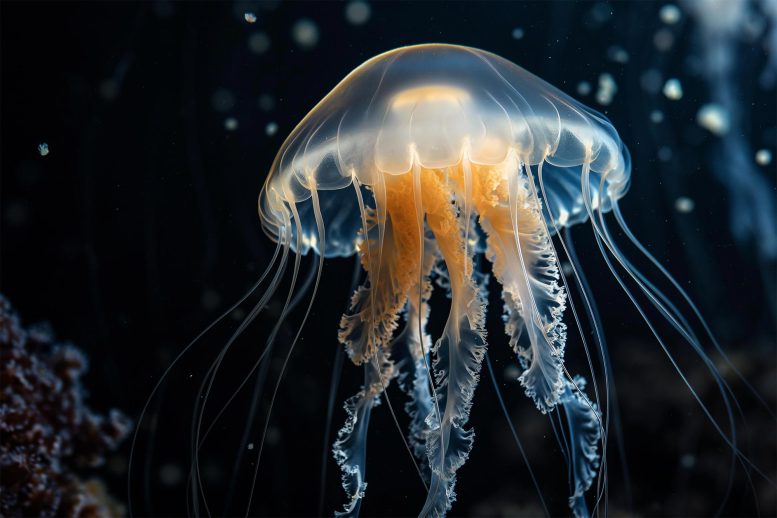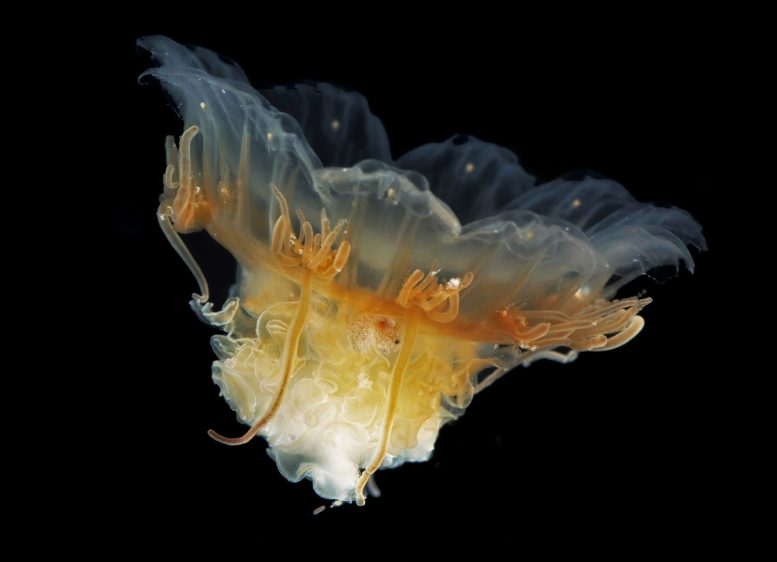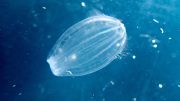
Researchers at the Alfred Wegener Institute have found that jellyfish could benefit from climate change, potentially expanding their habitats due to warmer temperatures and other environmental changes. This shift could lead to an increase in jellyfish populations at the expense of fish-dominated ecosystems, particularly in the Arctic Ocean, signaling a significant transformation of marine food webs and impacting fish stocks crucial for commercial fishing.
New AWI research reveals that jellyfish in the Arctic Ocean are benefiting from climate change and expanding further north.
Climate change is exerting immense pressure on many marine organisms. However, jellyfish across the world’s oceans may find an advantage in increasing water temperatures, particularly in the Arctic Ocean. Researchers at the Alfred Wegener Institute have demonstrated this through computer simulations, exposing eight common Arctic jellyfish species to scenarios of rising temperatures, diminishing sea ice, and other shifting environmental conditions.
The result: by the second half of this century, all but one of the species in question could substantially expand their habitat poleward. The ‘lion’s mane jellyfish’ could even triple the size of its habitat – with potentially dramatic consequences for the marine food web and Arctic fish populations. The study was just released in the journal Limnology and Oceanography.
In the future, jellyfish and other gelatinous zooplankton could be some of the few organism groups to benefit from climate change. As numerous studies have confirmed, the transparent cnidarians, ctenophores, and pelagic tunicates thrive on rising water temperatures, but also on nutrient contamination and overfishing. When combined, these factors could produce a major shift in the ocean – from a productive, fish-dominated food web to a far less productive ocean full of jellyfish. As such, many researchers are already warning of an impending ‘ocean jellification’, i.e., a worldwide rise in jellyfish populations.
The Role of Jellyfish in the Marine Ecosystem
“Jellyfish play an important part in the marine food web,” explains Dmitrii Pantiukhin, a postdoctoral researcher in ARJEL (Arctic Jellies), a junior research group specializing in Arctic jellyfish at the Alfred Wegener Institute, Helmholtz Centre for Polar and Marine Research (AWI). “Now that climate change is putting more stress on marine organisms, it can often give the gelatinous zooplankton a leg up on their competitors for food, like fish. This in turn affects the entire food web and ultimately the fish themselves: many types of jellyfish feed on fish larvae and eggs, which can slow or prevent the recovery of fish populations already under pressure, which are often also heavily fished by humans. As such, anyone interested in how fish, an important food source for us, will develop in the future, needs to keep an eye on the jellyfish.”
Despite their importance for all marine organisms, the transparent gelatinous organisms are often forgotten or neglected in ecological studies and model-based simulations. The study just released by Dmitrii Pantiukhin and his team closes an important gap in our knowledge, while also concentrating on a hotspot for climate change. “Of all the oceans, the Arctic Ocean is warming the fastest,” says the study’s first author. “In addition, roughly 10 percent of global fishing yields come from the Arctic. As such, the High North is the ideal site for our research.”
A great deal is already known about the physiology of jellyfish, including the optimal temperature range for them to thrive. In the course of the study, the AWI team combined three-dimensional species distribution models with the oceanographic components of the Max Planck Institute Earth System Model (MPI-ESM1.2). “Simulations of species distribution in the ocean are often two-dimensional, a bit like a map,” says Dr Charlotte Havermans, head of the ARJEL junior research group at the AWI. “But the distribution of jellyfish communities in particular is highly dependent on the specific water depth. Consequently, we made our species models three-dimensional. Once we coupled them with the MPI’s Earth system model, we were able to calculate how the distribution of eight major jellyfish species could change from the reference period, 1950 to 2014, to the second half of this century, 2050 to 2099. For future years, we applied the climate scenario ‘ssp370’, that is, a development path where greenhouse-gas emissions remain moderate to high.”
Projected Changes in Jellyfish Habitats
The results speak for themselves: seven of the eight species – including comb jellies (Beroe sp. / + 110%) and pelagic tunicates (Oikopleura vanhoeffeni / + 102%) – could expand their habitat poleward, in some cases massively, by the period 2050 to 2099, and also stand to gain from the progressive loss of sea ice. The hair jelly Cyanea capillata, colloquially known as the ‘lion’s mane jellyfish’, could especially expand northward, nearly tripling the size of its habitat (+ 180%). Only one of the species investigated (Sminthea arctica) would experience a minor decrease in habitat (- 15%), since it would have to retreat to greater depths to find its optimal temperature range.
“These results clearly show how dramatically climate change could affect the ecosystems of the Arctic Ocean,” says AWI expert Dmitrii Pantiukhin. “The projected expansion of the jellyfish habitats could have tremendous, cascading impacts on the entire food web.”
One question that remains open is how fish stocks in the Arctic would be affected by a jellyfish expansion. “There are many indications that key Arctic fish species like the polar cod, whose larvae and eggs are frequently eaten by jellyfish, will feel the pressure even more,” says ARJEL Group Leader Charlotte Havermans. “Therefore, our study offers an important basis for further research in this field. And management plans in the fishing sector urgently need to bear in mind this dynamic development in order to avoid the collapse of commercially exploited stocks but manage them sustainably.”
Reference: “Pan-Arctic distribution modeling reveals climate-change-driven poleward shifts of major gelatinous zooplankton species” by Dmitrii Pantiukhin, Gerlien Verhaegen and Charlotte Havermans, 15 May 2024, Limnology and Oceanography.
DOI: 10.1002/lno.12568










“…, by the second half of this century, all but one of the species in question could substantially expand their habitat poleward. The ‘lion’s mane jellyfish’ could even triple the size of its habitat – with potentially dramatic consequences for the marine food web and Arctic fish populations.”
The authors and their computer models seem to have overlooked the fact that jellyfish are food for other animals in the ocean and may keep the expansion of jellyfish in check.
According to ‘Copilot’:
Jellyfish, despite their stinging tentacles, are preyed upon by a variety of animals in the ocean. Here are some of the primary predators of jellyfish:
Sea Turtles: Sea turtles, especially leatherback turtles, are known to consume large quantities of jellyfish.
Sunfish (Ocean Sunfish or Mola Mola): These are one of the heaviest known bony fishes in the world and they feed on jellyfish.
Birds: Certain species of birds, like fulmars, also feed on jellyfish.
Fish: Several species of fish such as tuna, swordfish, chum salmon, and the bearded goby are known to eat jellyfish.
Sharks: Whale sharks and megamouth sharks include jellyfish in their diet.
Crabs: Some species of crabs also feed on jellyfish.
Other Jellyfish: Surprisingly, some jellyfish species are known to consume other jellyfish
Do you suppose that these predators just might benefit from an increased food source and increase their range and populations? Why does it seem that the ‘experts’ only see negative outcomes from global warming?
gooooooooooooooooood